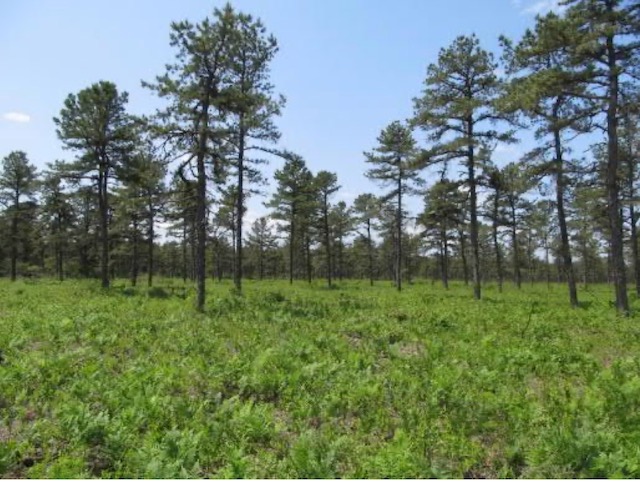The Pinelands Commission Meets Tomorrow at 9:30 – Let Them Know How You Feel
As I wrote when contemplating the beauty of my favorite, the sycamore tree (see “In The Woods”), the painter Thomas Cole, a founder of the Hudson River School, said this:
‘Yet I cannot but express my sorrow that the beauty of such landscapes are quickly passing away–the ravages of the axe are daily increasing–the most noble scenes are made desolate, and oftentimes with a wantonness and barbarism scarcely credible in a civilized nation. The wayside is becoming shadeless, and another generation will behold spots, now rife with beauty, desecrated by what is called improvement; which, as yet, generally destroys Nature’s beauty without substituting that of Art.’
Mark Lohbauer, Pinelands Commissioner, said this about the Murphy DEP logging plan:
“In this case I don’t believe there was a good basis to approve the Forest Service’s application. This is the same one that I had opposed last December, and Emile is right—the Service did modify their proposed application of herbicides in the project. However, they did not agree to eliminate them, nor did they agree to avoid the use of glyphosate (“RoundUp”) which I consider unsafe at any application. Moreover, the restrained use of herbicides was conditioned upon“if practical,” meaning that were they to decide that the mechanical approach were not working, they could revert to the use of herbicides without further review by the Pinelands Commission. Yet this was not my primary objection.
The application contained two projects: 13 miles of firebreak along Allen and Oswego Roads, and a separate project of thinning over 1,300 acres of forest in Bass River State park. The firebreak was occurring in a broad swath that included the most productive snake dens in the State—possibly the northeast region—for T&E snake species. These snake dens have been the subject of continuous study by Rutgers herpetologists as well as our own science staff at PC for 30 years. Last December I asked for the Rutgers herpetologists to be consulted by the Forest Service on their firebreak plan, because they had not been. It is not apparent to me that Rutgers was given the opportunity to participate in the revised firebreak plan that was before us last Friday. Nor did the revised plan include a specific protection for the snake dens, other than the Service would consult with the PC Executive Director in the event of contact with the dens. That seemed inadequate to me. Yet this was not my primary objection to the application.
Both the firebreak and the thinning projects were proposed as wildfire control measures, yet—as Commissioner Doug Wallner pointed out on Friday—there is no population center, housing development, or commercial area near the sites of the project activity. Wallner, who spent his career at the National Park Service working with local agencies like the NJ Forest Service on wildfire control, argued that there was no reason to pursue these projects since there was no population at risk of wildfire harm that could be protected by this project. Rather than vote for it, he abstained. I certainly agreed with him on that point, yet this was not my primary objection.
The thinning project was proposed to be performed over more than 1,300 acres in Bass River State Forest. For 1,100 acres they proposed to remove 90% of the trees. For the remainder they proposed to remove 96% of them. Ed Lloyd calculated that this would be over 2.4 million trees. This thinning was intended as a wildfire protection measure, yet we learned at the Pinelands Climate Committee last year that thinning has not proven to be a useful wildfire control measure; if anything, it causes wildfires to burn hotter and more destructively.Leslie Sauer shared a paper by ecologist Chad Hanson on this subject ( https://grist.org/fix/opinion/forest-thinning-logging-makes-wildfires-worse/ ) and argued persuasively that pro forestation is a much better approach to wildfire management.I find it difficult to support thinning as a wildfire management practice generally, but particularly so in this case where:
A number of T&E bird species including barred owl, would be impacted negatively by the tree cutting;
The plan called not only for cutting the trees, but for harvesting them as well, which is contrary to the good forestry practice of cutting and leaving trees in place;
At the Pinelands Commission, we are in the process of deliberating a “no net loss” policy for trees which, although not yet in place, would be completely contradicted by this project.
In the end, the injury to the carbon sequestering ability of this forest was my primary objection to this project. I don’t believe that the work that the Forest Service proposes to do is either warranted by the circumstances, nor healthy for the flora and fauna of this forest. I opposed it, and I hope that there still remains some opportunity to prevent the Forest Service from moving forward with this now permitted, yet ill-planned project.” ~~~ end Lohbauer



Pingback: WolfeNotes.com » ORWELL: Conservationists Conduct Tour To Promote DEP Logging Of Pinelands Forests
Pingback: WolfeNotes.com » NJ Conservation Groups Trying To Silence Critics of DEP’s Wildfire Logging Plan
Pingback: WolfeNotes.com » Tell Gov. Murphy To Veto DEP Pinelands Logging Plan
Pingback: WolfeNotes.com » Senate Environment Committee Urged To Conduct Oversight Of Murphy DEP Abuses